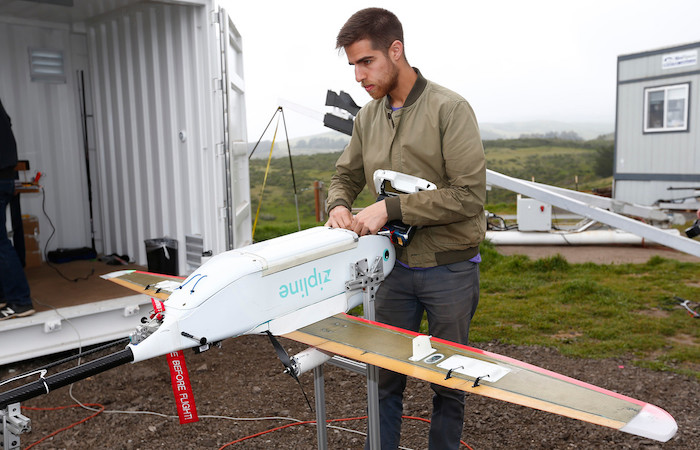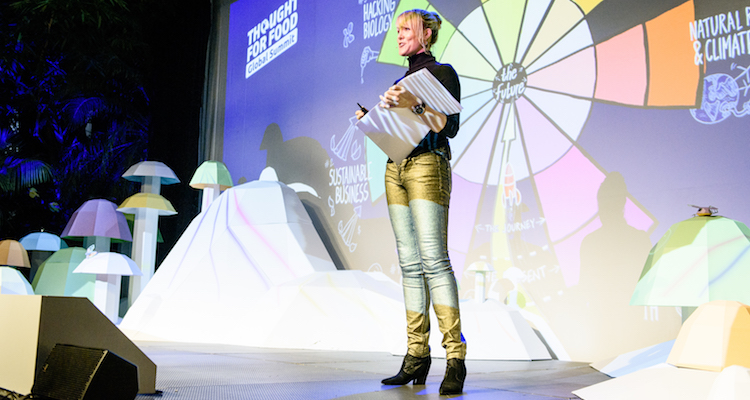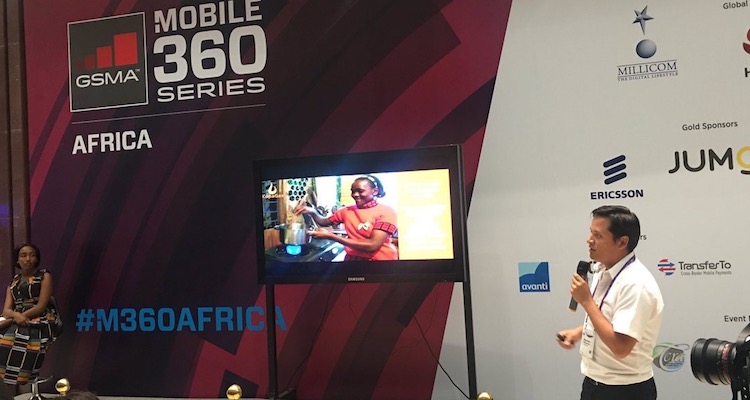Listen Now
We have spent a fair amount of time on the Terms of Reference Podcast talking about data – big data, data collection, using (and not using) data. While I’m sure that we will continue to talk about data a lot in the future, and hopefully (and more importantly?) the useful information that data creates, today’s episode focuses on the portion of the innovation spectrum in development and aid where the truly tangible, potentially game changing product or service that someone (or group of people) who has poured blood, sweat and tears into making a reality… is actually becoming a reality. For the 115th episode of the Terms of Reference Podcast, I speak with Ryan Oksenhorn of the company Zipline. A member of the founding team, he is the company’s Software Team lead and and also runs the flight testing program. Zipline is a complete rethinking of the delivery of critical and emergency health care products, like blood or vaccines, for hard-to-deliver-to places. They fly them there. On demand. Within minutes of receiving a request. While this seems like a no-brainer, as you’ll hear in the podcast, the Zipline team has had to solve massive amounts of problems to achieve the safety, reliability and quality necessary for this service – the solutions to which have only become possible in the last few years. They are kicking off the launch of the Zipline service in Rwanda this summer. I was inspired and I hope you will be as well. You can connect with Ryan here: http://flyzipline.com
IN TOR 115 YOU’LL LEARN ABOUT:
- The logistics of delivering medicine to home clinics to half of Rwanda via drones.
- The specs for the vehicles themselves, developed in-house by Zipline.
- The beta in Tanzania and how it became Zipline in Rwanda (including why drones development is more prosperous in the developing world).
- How Zipline is getting ready to begin the operation this August, and its plans and partnership for the future.
- More on the vehicles’ specs and the combined centuries of expertise of the team.
OUR CONVERSATION INCLUDES THE FOLLOWING:
Organizations
- Zipline http://flyzipline.com
- UPS
- Global Vaccine Alliance (Gavi)
- SpaceX
- NASA
- Lockheed Martin
- Sequoia Capital
- Jerry Yang
- Amazon
- Google’s Project Wing
Topics
- Unmanned Aerial Vehicles (UAVs), “drones”
- Home Clinics
- Battery Cells
- Automated Safety Checks, Pre-flight Checks
- Avionics
- Aerospace Industry
Places
- San Francisco, CA
- Tanzania
- Rwanda
EPISODE CRIB NOTES
From a Cattle Ranch on a San Francisco Peninsula Zipline delivers medicine through drones. It started in Tanzania with a “remote clinic” project. People’s access to hospitals was difficult. Doctors collected home addresses to solve medical needs. Now drug prescriptions are sent to “home clinics” by UAV. Arrival is notified by SMS. A centralized distribution center of medical products. Drone (“small airplane”) weight about 10kg. It takes 5min to liftoff. When it arrives to the location the vehicle lets the package go in a little parachute and returns. The flight is autonomous and the route is on the package. Packaging and labeling is where the human involvement ends. The vehicle has a 150 km flight range. It reaches 100 km/h. Fully electric. The vehicle is made of carbon fiber, kevlar and 3D-printed parts. Deliveries are for things they cannot get otherwise. One delivery center services “half of Rwanda.” Operations will begin fully fledged in August 2016. Warehouse Rwanda Small country, short flights. “It’s the land of a thousand hills.” Very mountainous, tropically rainy. “The biggest thing [for Zipline’s success] has been our credibility.” Zipline delivers where many proofs of concept fail. Zipline is the result of 2 years “under the radar.” Zipline vehicles are resilient to most climates including rain, and situations of lost communication or power. The model is low cost so governments can afford it. “It costs the same as motorcycle delivery, but it is much better” in terms of speed and other value aspects. When did drone delivery become appropriate and reliable? Cities have standardized solutions. Trucks will stand against UAVs for now. Wind is the largest hurdle. “It compresses and decompresses the route.” The vehicles need a lot of range to overcome wind. Because of wind, vertical take-off and landing was discarded. Otherwise it would limit the 150 km flight range noticeably. Zipline is a system. “We don’t sell drones.” This puts the team in position to address most hardware, software and logistical issues in-house. Take-off uses a “mechanical slingshot” of sorts. It propels the vehicle to reach 100km/h over 30s. Anticipation Nobody knows the solution to this problem. There is no antecedent. The system has been tested to stand over 100 deliveries per day. Zipline has a fleet of 15 vehicles. One distribution site. Fully electric. As soon as the vehicle lands back on the warehouse, the battery is replaced and is ready to go again. All infrastructure is in one city. “We don’t have to install anything anywhere else.” A For Profit Charged per delivery. Terms of the agreement complicate things in different ways. Things ever get litigious? “We just send another plane.” Zipline intends to cover the other half of Rwanda by 2017. New potential projects involve UPS, Global Vaccine Alliance (Gavi) for vaccine delivery. A larger array of delivery products will benefit economies of scale. The vehicles There are unofficial plans to release new versions of the planes, to cover new needs globally, not only in the developing world. “There are parts of the U.S. that suffer from the same problems.” The technology is going to represent “more solvable problems.” Mobile computing has helped by plummeting the cost of components and sensors. “Avionics are essentially parts of a cell phone.” Battery technologies have also improved with efforts such as Tesla’s on cells. “We get to ride on all of their success.” Better batteries will improve spans and loads, reducing costs even further. Manned, Unmanned Aerial Device Community Zipline “will ultimately benefit all of aerospace. Drones and even commercial airliners.” Zipline is the safest technology in existence, bar none. Vehicles ship within 5 minutes of a request. To accomplish this it was necessary to automate pre-flight checks. “Our vehicle goes through over 200 automated pre-flight checks in under a minute.” A common cause of accident is ailerons that stop responding and get stuck in dangerous ways. Zipline’s aileron check uses cameras that measure movement against expected response by control services. The system can detect failure on the ground and “wear and tear” to identify operational risk areas. I and Team Skills “We assembled a team of complete experts” with guys from SpaceX, NASA, Lockheed Martin. “The pace at which we’re moving is amazing” with a new vehicle generation every three months. “Everyone working here will become even smarter working with all of them.” However, nobody had done something like this before. The vehicle is made of carbon fiber, kevlar and 3D-printed parts. “You could smash the wing against a wooden table. It would not dent the table but you would not dent the wing either.” “Or you could cut any one wire and the vehicle would still fulfill the mission.” This includes engines, GPS (it has two), computer (two) and communications. Funding Governments are customers. VCs covering development include Sequoia, Jerry Yang. High ROI potential. “We’re focused on proving we have a real solution, definitely not focused on the financials.” Cost-Effectiveness was a condition from the start. Ryan’ On Motorcycle ambulances. Handheld drones. Amazon Prime. Google’s Project Wing. SpaceX. “It will save humanity, hence it’s humanitarian.”Please share, participate and leave feedback below!
If you have any feedback you’d like to share for me or Ryan, please leave your thoughts in the comment section below! I read all of them and will definitely take part in the conversation. If you have any questions you’d like to ask me directly, head on over to the Ask Stephen section. Don’t be shy! Every question is important and I answer every single one. And, if you truly enjoyed this episode and want to make sure others know about it, please share it now:[feather_share show=”facebook, twitter, linkedin, google_plus” hide=”reddit, pinterest, tumblr, mail”]
Also, ratings and reviews on iTunes are very helpful. Please take a moment to leave an honest review for The TOR Podcast!




